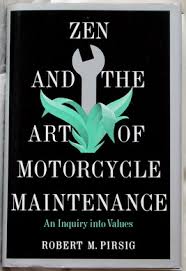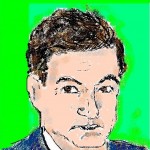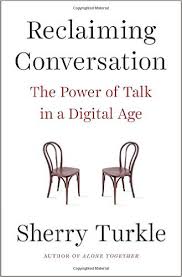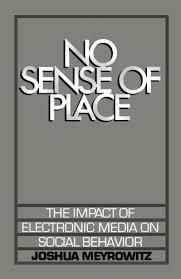Recurring rhetorical forms have the value of reshaping thoughts that may have grown stale. Some devices are helpful; others can be cunning.
I’ve never been the kind of rhetorician that savors labeling odd rhetorical maneuvers with their Latin names. Classical forms can verge into the arcane. They can also be obvious and functional, like the use of satire or irony. Lists of common figures of speech can reach into the dozens. I can’t say that this stopped my professors, some of whom relished letting a Latinate name roll of the tongue: a kind of verbal jewel placed before us to admire. We students were supposed to be impressed, as if a chemistry teacher had just put two clear liquids together to produce a black solid. Indeed, almost any complex thought may benefit from new language that allows us to see what we never noticed. Recognizing them provides a thrill that may puzzle many. But there it is. Rhetoricians are a different lot.
Here are a few favorites that condense a particular rhetorical tactic or slight-of-hand into a compact form.
Synecdoche: –The use single element to stand in for the whole. It’s an old and sometimes respectable rhetorical tactic to use one person or thing as a stand-in for a much larger class. Think of images of firefighters in the smoke of the World Trade Center, or a Dorothea Lange photograph of a dust-bowl family. Similarly, if we say “Abraham Lincoln captured the zeitgeist of his time” we would be giving the Civil War era a much-needed moral facelift. His earthly practicality and fleeting idealism reflected the tensions of the time. To be sure, the assertion is pretty reductive. But a synecdoche has the advantage of making big ideas more apparent by reducing them to a single vessel. Among other things, this device is what makes television news possible.
Affirmation by Denial:– This is usually a statement in which a questionable claim is repeated, seemingly to put it into play, but then innocently disavowed. The wily speaker or writer doing this usually thinks he can have it both ways: repeating a slander or untruth as an innocent piece of information, then stepping out of the way and feigning a degree of neutrality. Presidential candidate Donald Trump pulled this shift on President Obama all the time, raising the specter of birtherism, and then putting some daylight between himself and the bogus assertion. And we could do the same for him: “Some people think the former President has serious mental health issues. I’m not saying that he does, but I hear it a lot.” Better that a person simply take ownership of an idea if they choose to raise it.
Anaphora: –The repetition of a word or phrase for emphasis. Oral rhetoric especially favors anaphora. There is something inherently pleasing about a verbal structure built around parallel repetitive elements. It’s the basis of most pop music, giving three or more chances to hear a catchy theme. In addition, anaphor is a hallmark of a lot of memorable speeches that have entered the American canon. Consider one of the most famous examples uttered by Martin Luther King in August of 1963: “I have a dream that one day even the state of Mississippi . . . will be transformed into an oasis of freedom and justice. I have a dream that my four little children will one day live in a nation where they will not be judged by the color of their skin but by the content of their character. I have a dream today!”
Oxymoron:–The use of two words or phrases in apparent contradiction to each other: for example, “jumbo shrimp,” “civil war,” “military intelligence,” “educational television,” “congressional leadership” or “militant pacifist.” Actually, an oxymoron can arise from the mixing of any two ideas that seem to be unlikely partners. The best of these can offer what Kenneth Burke called “perspective by incongruity.” A pairing of two dissimilar terms can make it easier to understand a different perspective. The simplest effects may be comic, as in this famous reference to a lover’s easily muddled thinking, from Act 1 of Shakespeare’s Romeo and Juliet.
Why, then, O brawling love! O loving hate!
O anything, of nothing first create!
O heavy lightness! Serious vanity!
Misshapen chaos of well-seeming forms!
Feather of lead, bright smoke, cold fire, sick health!
Still-waking sleep, that is not what it is!
This love feel I, that feel no love in this.
Dost thou not laugh?
Enthymeme: The presence of this device is indicated by what is generally assumed, but not said. Aristotle seemed to be the first to notice that the art of addressing an audience includes the skill of understanding when they will provide their own experiences as evidence. Hence, the enthymeme: a claim that usually triggers thoughts or prior experience that will confirm what you are suggesting. This has many virtues, the most profound of which is that audiences are effectively induced into being co-participants in their own persuasion. “Virtue signaling” is a form of this. What a person happens to mention may indirectly suggest an admirable trait. They have triggered an impression without more blatantly having to declare it.
When the 1968 presidential campaign of Lyndon Johnson ran a particular attack ad against GOP candidate Barry Goldwater, Goldwater’s name was never mentioned. The images were enough to identify the Arizona Republican’s scary thoughts about the possible use of “tactical” nuclear weapons in Vietnam. The so-called “Daisy ad” created by Tony Schwartz help assure a Johnson landslide, even though it only appeared on television a few times. As Schwartz later noted, the ad recruited viewers as a “workforce,” completing associations triggered by the images.
Scapegoating: Burke was especially good at explaining how groups or individuals usually face two options when a decision or action didn’t turn out as well as they wished. If someone screwed up, they can accept responsibility and note with regret that their efforts failed to work out. He called this the “mortification” option. But doing this carries no obvious rewards, and requires a certain degree of grace and humility.
So we usually opt for the second choice: we scapegoat the problem to others. It’s easier to blame Bill or Fred because doing so is an act of personal redemption. In this form our words are all too familiar: “Things are not going very well in my life right now and it’s her fault.” “They have created the mess we’re in.” “True, I flunked the course. But I had a lousy teacher.” “The problem with America is that it has too many undocumented immigrants.”
For many of us, scapegoating has become a way of life. And its clear that the motivation to blame others continues to ruin the public discussion of too many issues.
![]()










